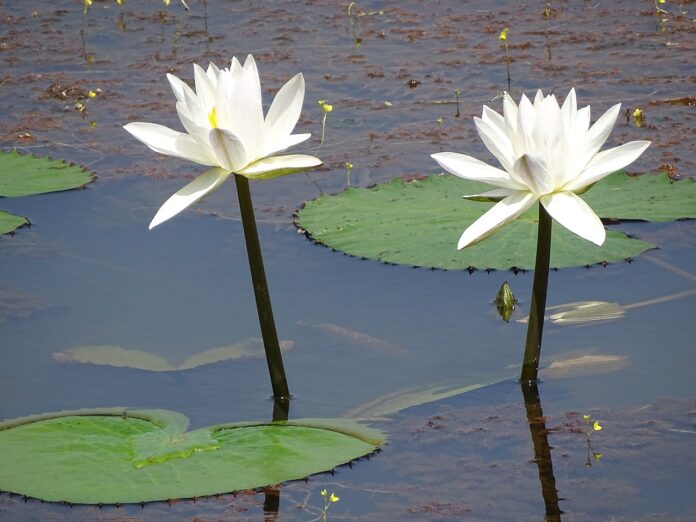Water lilies can be found in various bodies of water, whether with flowing or still waters. Few people know that these plants have been around since the time of the dinosaurs! Although they have undergone significant changes over millions of years, they remain among the most ancient inhabitants of our planet.
Facts About Water Lilies:
- In Latin, they are called “Nymphaea,” a name derived from the ancient Greek word, which sounds almost identical and means “little nymph.”
- Special dirt-repellent paints were developed thanks to water lilies. Both the flowers and leaves of these plants secrete a substance that prevents them from getting dirty, so they always appear clean.
- Some species of water lilies have found uses in the traditional medicine of various cultures.
- Water lilies are almost as old as ferns, which have remained unchanged for millions of years. Among all flowering plants, they are the oldest .
- Large water lilies are sensitive to weather changes and time of day. In the morning or before rain, they close their delicate flowers and hide them beneath the water’s surface. They only bloom at night and in good weather.
- Many legends are associated with water lilies, featuring mermaids and other mythological creatures that dwell in water.
- Some species are threatened with extinction. For example, the white water lily is listed in the Red Book of Russia.
- Water lilies do not grow in deep waters, as their roots need to reach the bottom. The maximum depth where they are found is about 4 meters, but they usually prefer shallower areas, no deeper than 1 meter.
- Despite their uniqueness, botanists only began studying water lilies in the 19th century.
- The roots of these plants, rich in starch, can be used to make flour.
- The seeds of water lilies were once consumed, not as food per se, but they were roasted to make a drink. Some claim that it tastes similar to good coffee.
- The largest water lily in the world is the Amazonian Victoria, which grows in the Amazon River. It is depicted on the coat of arms of Guyana. Its leaves can reach up to 2 meters in diameter and can support up to 50 kg if the weight is evenly distributed.
- The resemblance between water lilies and other aquatic plants like spatterdocks often leads to confusion between the two.
- There are 50 species of water lilies worldwide.
